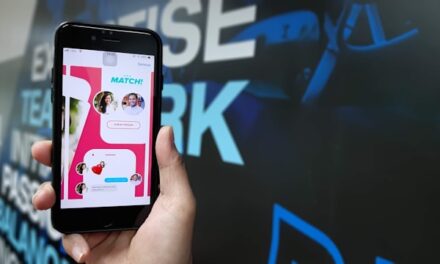Someone says it casually over coffee: “I can’t do this anymore. I can’t swipe one more time. It’s all noise. No one’s real.”
You’ve heard it before. Most of us have. The apps promised unlimited choice, but all that choice can feel strangely empty. People want to meet someone who actually fits them — not just someone who happened to be within five miles and awake.
That’s where setting up a dating agency begins. Not with algorithms. Not with flashy branding. With the simple idea that someone needs to take care in how introductions happen. A dating agency is basically a space where people are seen, sorted, matched, encouraged, and understood — slowly, intentionally.
It’s less about technology and more about designing an environment where the right kinds of people find each other. And if you’re drawn to that role — the connector, the sense-maker, the quiet matchmaker — building an agency might fit you better than you think.
What a Dating Agency Actually Does

Most people think a dating agency is just “introducing two people and hoping it works.” It’s more deliberate than that. A dating agency listens. It pays attention to the things people don’t always say out loud — how they carry themselves, what kind of pace they move at, what they’re tired of repeating in relationships. The agency’s job is to curate introductions, not just make them.
When someone comes to an agency, they’re usually done with randomness. They don’t want swipe roulette or endless small talk. They want someone who shares their rhythm — similar intentions, similar emotional availability, similar stage of life. Matching isn’t about perfection. It’s about fit.
Personality matters. So does lifestyle. So does the way someone sees their future. A dating agency becomes a filter and a guide — helping clients move toward the people who make sense for them, not just whoever shows up.
And when you start setting up a dating agency, this is the heart of the work: understanding people well enough to introduce the right ones to each other.
Agency Models
There are different ways to shape the service, depending on your style and the kind of people you want to help:
- Personal Matchmaking — one-on-one guidance. You interview, you listen, you match, you follow up. It’s hands-on, steady, personal.
- Event-Based Dating — hosting things like small dinners, wine tastings, board game nights, or speed dates. The atmosphere does half the work.
- Niche Agency — maybe you specialize: artists, remote workers, people over 50, travelers, spiritual communities. Shared identity makes matching easier.
- Hybrid / Online Agency — a membership site or private online community where clients browse curated profiles, book introductions, or talk to you directly.
Choosing the structure is part of learning how to set up a dating agency that actually fits the people you want to serve.
Defining Your Audience & Positioning

The quickest way to confuse your agency is to try to welcome everyone. Dating works better when there’s a clear doorway — a type of person who walks in and immediately feels, “Ah, this is for me.” When you’re setting up a dating agency, deciding who it serves is the real foundation.
You could work with people who are serious about long-term relationships and have steady, full lives already. Or your agency might feel right for quieter personalities — the ones who prefer slow conversations over loud rooms. Some agencies center around life transitions: people who just moved to a new city, frequent travelers trying to find stability, or newly divorced professionals who want something intentional and gentle.
A few questions sharpen the focus:
- Who is exhausted with their current dating options?
- What stage of life are they in?
- What do they want that apps don’t give them?
- What tone of communication feels natural to them?
Even geography matters. A dating agency in a small town runs differently than one in a big city. Matching based on lifestyle is often more reliable than matching based on job or age alone. People want someone who moves through life at a similar speed.
Your positioning influences everything: the imagery on your website, the tone of your emails, how you interview clients, and even how you decline someone who isn’t a fit. People can feel when something was designed for them — and when it wasn’t.
Creating Trust
A dating agency is only as strong as the trust behind it. If someone feels unsure, uncomfortable, or confused about your process, they won’t relax into the introductions you make.
Trust forms through:
- Clear expectations: how matching works, how long it may take.
- Privacy and boundaries: what information is shared and what stays confidential.
- A human voice: real conversation, not generic scripts.
- Follow-through: you remember details, check in, refine the match.
People open up when they believe they’re being taken seriously. A dating agency becomes valuable when clients feel seen, guided, and understood — not processed.
Building the Service Experience

This is where an agency becomes real. The experience is shaped by how you listen, what you notice, and the rhythm in which you guide introductions. Clients aren’t looking for a magic formula. They’re looking for someone who pays attention — someone who takes their relationships seriously, even when they’re unsure or cautious themselves.
The service experience is built in two parts: how you get to know each client, and how you decide who to introduce to whom. Both have structure, but both also leave room for instinct.
The Intake Process
This is the first real conversation — the one where someone sits across from you (or on a call) and tries to explain who they are, where they’ve been, and what they want next. A good intake doesn’t rush.
It usually includes a few steps:
- A simple onboarding questionnaire to gather basics like age, city, lifestyle, core values.
- A personality interview — relaxed, curious, open. The part where walls lower.
- Optional identity verification, especially useful if your agency serves professionals or safety-conscious communities.
- Clear boundaries & expectations, discussed gently. Dealbreakers, pacing, communication style.
The goal is to learn the texture of someone’s life — not just their stats.
The Matching Workflow
Matching works like a slow, thoughtful craft. You’ll keep an internal database, even if it’s small at first. You’ll record not just attributes but impressions: tone, humor style, emotional openness, what they light up about when they talk.
Matching uses criteria, but it also uses intuition and reflection. Two people can look perfect on paper and still not work — and sometimes the most surprising pairing becomes the best one.
You’ll learn to pace introductions. Not one after another, not rushed. Some clients need space to feel, observe, and try again.
This is the part of how to start a dating agency that no guide fully explains — you learn it in real conversations, one person at a time.
Creating Your Website & Online Presence
The digital side of the agency isn’t about looking flashy. It’s about giving people a sense of how you work — enough clarity that they feel safe reaching out. A dating agency site is different from a dating app. It doesn’t need swiping or endless profiles. It needs presence, confidence, and a clear explanation of what someone is stepping into.
Think of the website as the front hallway of your agency. When someone lands on it, they should immediately understand:
- What kind of people you work with
- How the process unfolds
- What it costs (at least in broad ranges)
- How to take the next step
The core elements usually look like this:
- A “How It Works” page that walks through intake, matching, and follow-up.
- Testimonials or stories — real voices matter more than polished success statistics.
- An intake form or short questionnaire that lets you get to know someone before speaking.
- A consultation booking link — ideally a short call, low pressure, friendly tone.
This is where a bit of strategy helps. If creating your site feels overwhelming, treat it like building a dating app business plan — outline who it’s for, how they find you, how they move through the process, and where they arrive.
Once the site exists, attention becomes the main work. Dating agencies grow through trust and conversation, not mass advertising. Some places to show up:
- Local communities — coworking spaces, neighborhood events, hobby clubs.
- Professional groups — especially if your agency supports people with busy schedules.
- Social storytelling — short reflections on dating patterns, emotional habits, small wins.
- Partnerships with therapists, coaches, yoga studios, book clubs, community hosts.
You’re not trying to scream into the internet. You’re inviting the right people to notice you — the ones who already know they’re ready for something real.
What Are the Costs Involved in Opening a Dating Service?

The cost depends on how far you want to take the digital side of your agency. If you’re just beginning and want a simple online presence — a clean site, a clear explanation of your process, and a way for people to book consultations — you can start lean. A domain and hosting are usually under $100 per year. A decent website theme or template runs around $50–$150. If you use basic dating or community software, expect around $300–$600. Add a logo or visual identity and you’re still often under $1,000–$1,200 total.
Things change when you want your agency to feel like its own platform — with member profiles, messaging, personality-based recommendations, event sign-ups, subscription tiers, and real structure. A custom-built platform can cost anywhere from $15,000 to $50,000+, depending on:
- How matchmaking works inside the system
- Whether you need identity verification or secure chat
- The level of automation vs. hands-on curation
- Your database and scaling needs
At that level, you’re building something with staying power — not a landing page, but an ecosystem.
And then there’s visibility. To get your first clients, expect at least a small advertising or outreach budget, even if you grow through communities instead of ads. Some agencies start with $300–$1,000 for early testing. Larger paid campaigns (Facebook, Instagram, Google) often begin around $3,000–$5,000.
You can start small, test the concept with conversations and simple matching — and scale the digital investment once the demand is real. The cost grows in proportion to what you want the agency to become.
Build Your Custom Dating Platform with Scrile Connect
Once your agency starts gaining clients, there comes a moment where spreadsheets and DMs stop being enough. You need a place where your members live — a space that reflects your tone, your values, and the way you guide your matches. And this is where many people get stuck. They look for an off-the-shelf dating site builder, and everything feels generic. The vibe gets lost.
Scrile Connect avoids that problem entirely.
Scrile Connect is not a pre-made dating app, and it isn’t a marketplace you have to “fit yourself into.” It’s a custom development service that shapes a dating platform around your agency’s personality and process.
With Scrile Connect, you can:
- Define your own matching model — whether you want full matchmaking control or a guided browsing experience.
- Create branded member dashboards where clients see matches, submit feedback, update preferences, and book calls.
- Integrate verification steps like ID checks or video introductions, if trust is central to your approach.
- Use membership tiers or paid consultations — high-touch matchmaking, community access, event tickets, or premium introductions.
- Host events or mixers directly inside the platform, with RSVPs and payment built in.
And the most important part:
You keep ownership of everything.
Your brand, your rules, your pricing. Your member relationships. There’s no algorithm shifting under your feet, no strangers selling ads on top of your community.
This is where setting up a dating agency becomes sustainable. You start as a personal matchmaker — listening, learning, introducing — and then you build a digital home where your clients can stay, return, and grow. Scrile Connect gives your agency room to evolve from one-on-one matching into a living, breathing community that keeps working even when you’re not in the room.
Conclusion
A dating agency begins with listening. Someone sits down and tells you what they’re tired of, what they hope for, and what kind of partner would make their life feel steadier, warmer, or simply more genuine. The work grows from that moment — not from formulas. Matching is emotional pattern recognition, pacing, check-ins, and the patience to let something real unfold.
When setting up a dating agency, you’re shaping a culture as much as a service. You decide who belongs here, how introductions happen, how boundaries are respected, how people are supported if something feels awkward or tender or unexpectedly good. You’re building a place where dating can feel safe and meaningful again.
And when it comes time to take the agency online, you don’t need a generic app that flattens the personality you’ve built. Scrile Connect lets you create a digital home that reflects your approach — your rhythm, your communication style, your standards.
If you’re ready to turn your agency into a platform that grows with you, reach out to the Scrile Connect team. Tell them how you work. They’ll help you build the space where your clients will meet.





